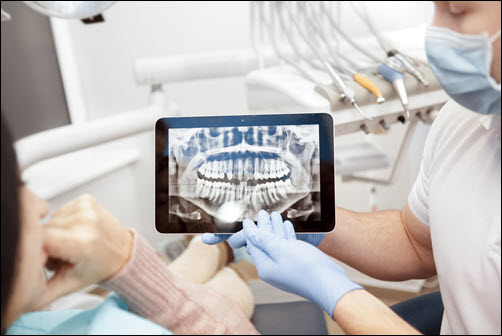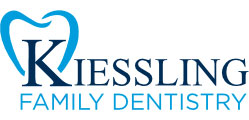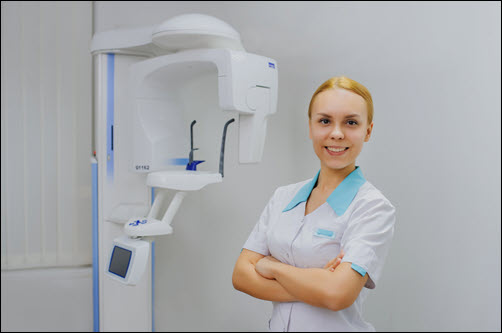Dental X-Rays: Types and How They’re Used
When your teeth or gums hurt, it is common to go to the dentist. And, while they can look in your mouth and see whatever may be at the surface, they must take an x-ray for an accurate assessment. Of course, x-rays are also a part of at least one of your dental exams each year. They identify concerns such as cavities or impacted teeth. Your dentists can also track TMJ issues and identify malocclusion. They are commonly only performed once a year. However, they can be more often if your dentist needs to track the progress of a specific concern.
Types of Dental X-Rays
There are two main types of dental x-rays: Intraoral and extraoral. As you might surmise, extraoral dental X-rays are panoramic and dental scan photographs taken outside the mouth. These X-rays focus on the jaw and skull. Intraoral X-rays are those taken from inside the mouth.
Intraoral X-Rays
Bitewings – Made by biting down on a bite plate placed at the back of the mouth.
Periapical – Used to get a better look at just one or two teeth. These are especially helpful for determining the cause of localized tooth pain or in the event of an injury.
Occlusal X-rays – Used to note full tooth development and placement.
Intraoral X-rays are used to do the following:
- Find cavities
- Check the health of the tooth root and bone surrounding the tooth
- For children, it lets the dentist assess tooth development
- Monitor the overall health of your teeth and jawbone
Extraoral X-Rays

Panoramic – Scans the entire mouth on a single ray. Used to identify impacted teeth, emerging teeth, and any tumors.
Tomograms – Shows a portion of the mouth in specific detail.
Cephalometric – Most commonly used in orthodontist offices to examine teeth in relation to the jaw and profile.
Unlike the detail obtained with intraoral X-rays, extraoral X-rays have a broader scope of usage. They are used for:
- Identifying impacted teeth
- Monitoring the growth and development of the jaws as they related to tooth growth
- Note problems between the teeth and jaw, the most familiar being that of TMJ (temporomandibular joint disorder)
How Do Dentists Use X-rays?
- Diagnose problems sooner rather than later
- Make a plan for an emergency or upcoming treatment, such as implants, braces, or dentures
- Evaluate the progress of a treatment
- Assess your bite, especially with impending orthodontic work
- Detect gum disease and check oral health status
- Determine the risks of tooth decay and cavities
- Monitor changes in your teeth and gums over time
- Identify and determine treatment for abscesses
Dental X-rays are a great way to ensure your smile is everything you want it to be. Talk to our dental team at if you have questions about x-rays and our procedures.



